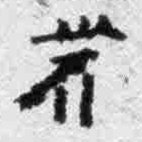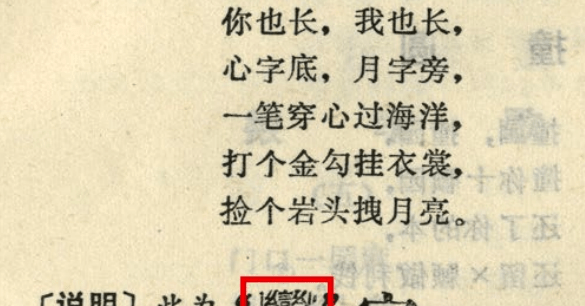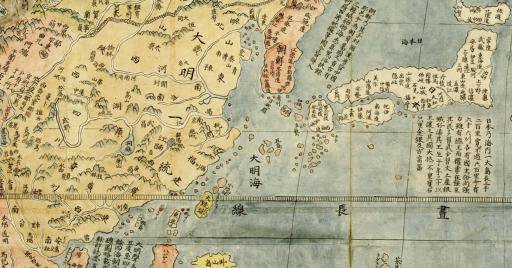
Maxim Persikov (Panates)
@gyankotsu
Followers
3K
Following
2K
Media
462
Statuses
1K
🇷🇺 | 24 y.o. | (Historical & Grapho-) Linguistics | Japonic | Trans-Himalayan (esp. Gyalrongic & Sinitic) | Chinese Family of Scripts | Unicode IRG
St. Petersburg, Russia
Joined March 2016
Sorry for having kept you waiting, but here's my huge guide to ancient Chinese script and its etymology (be prepared for a long read!) "How to Expose False Etymologies of Chinese Characters? An Introduction to the Study of (Early) Chinese Writing" https://t.co/FaYBbYbzSo
4
52
223
korean glyph shortenings are always nice to see! 齒 with ㅊ
2
17
98
A short blogpost on 𰻞/𰻝 (from the famous biang-biang noodles) and its relatives. I briefly described their origin, spread, the variability of their components, and the emergence of their readings and meanings. Lots of pictures too, enjoy. https://t.co/zTrH3NTlb0
blog333610347.wordpress.com
Among students of Chinese, few haven’t heard of the famous biang-biang noodles, in which biáng is written with a rather hefty character: In 2020, it was even added to Unicode: 𰻞 (tr…
0
15
47
鋨 for nokogiri "saw" in 黒本本『節用集』😭 so they knew the glyph origin of 我 all along........
0
0
14
it's kinda funny how wikimedia has hundreds of thousands chinese-japanese-korean titles but like 300 english ones
0
3
35
The second edition of the grammar of Japhug is now available: https://t.co/DMFdnxWvfJ
0
11
23
It's well documented that Chinese people had font support issues since early Western Zhou.
0
60
360
If you like learning about Old/Classical East Asian languages, historical linguistics (mainly Trans-Himalayan and Japonic) and Chinese palaeography, welcome to the best server on the topic! https://t.co/ywW77E0hl4 (note: related memes and brainrot are welcome too)
discord.com
本會之志,考舊察古。乃習其言,學其理,觀其同,究其異。 | 1149 members
0
7
53
Tired of writing kōji as 麴, 粷 or 糀? Try this cool ⿺麥花 from Yukie Chiri's handwriting in 1922
0
2
47
Based on 吳丹丹, 2025.09.07. 說遼博網甲骨照片號碼稱說方式——附遼寧省博物館藏甲骨新綴三組. [ https://t.co/zVi5ZnfL5J]
0
0
1
Not all number have been found yet, but here are some: 05846 (遼博395), 17756 (遼博402), 17806 (遼博403), 18022 (遼博404), 24973 (遼博408), 29789 (遼博409), 29790 (遼博410), 29791 (遼博411), 29792 (遼博412), 29793 (遼博413), 29794 (遼博414), 31584 (遼博415), 33618 (遼博416) /3
1
0
1
So, e.g., if you want to see the bone 遼博1 (museum catalogue), you should replace ????? with 05452 (i.e. 遼博網05452). The list of these: - 遼博1 to 遼博388 = 遼博網05452 to 遼博網05839 - 遼博416 to 遼博455 = 遼博網33618 to 遼博網33657 - The other ones are tricky... /2
1
0
0
The Liaoning Provincial Museum has uploaded photos of oracle bones, but it's tricky: you need to follow https://t.co/y9MWQQeZiq, where ????? should be replaced with a certain number (see thread). And it's exciting that there are joinings already (pic)! /1
1
1
11
If you want to have a glimpse of the timeline in which the orthography of ancient texts wasn't "standardized" in the Han dynasty, try 穆天子傳, which was unearthed during Jin (晉) and was being transmitted since then, with some (highly distorted) ancient forms preserved as is
4
18
114
...depicting a shackled man with a cangue around his neck. Later, this semantogram evolved into the phonetic element ⿰革勹 in characters such as 鞠, 鞫, etc. /end
0
1
13
I won't list the examples here to avoid making this thread too long; please refer to 李家浩, 2022. 談《說文》“梏”字說解. Another strong piece of evidence is that in oracle bone inscriptions, the word {梏} is written with the semantogram 𰇶 or ⿰𰇶勹, ... /12
1
0
4




